We’re positive everyone reading this is familiar with the wail and rat-at-tat-tat cry of an impact wrench (or six) at automotive and tire shops nationwide. It’s no secret that they’re standard equipment in the toolboxes of mechanics everywhere.
And once you’ve had the chance to use impact tools, you’ll know why they are so universally respected.
But that brings up the question of what type of impact wrench should you get? There are three basic types of impact wrenches—air (pneumatic) powered, electrical (corded) powered, and cordless impacts that run on battery power. All are easy to use.
An air impact wrench, which, for the most part produces more torque than the other types, is typically the choice in professional shops (there are some exceptions to the maximum torque and we’ll get to that in the photos below).
Air impacts are pretty relentless when it comes to output. For example, they don’t slow down when a battery runs out of juice. Some 1/2-inch impacts produce north of 1,100 foot-pounds of torque.
But to make full use of that big air powered torque, you’ll need a big compressor to run it. That usually means a compressor with at least 5 to 7.5 HP, and better still, a compressor that has a two-stage configuration. Something like this will easily keep up with a big torque 1/2-inch drive impact (or two) running at full bark.
With a corded electric impact wrench, you just plug it in and turn it on. Slip on the socket and extension and you’re ready to rock. An electric impact wrench can prove be one of the go-to tools in your shop that allows you to fly through difficult jobs. Just keep in mind that corded electrics won’t have the nut-breaking torque of an air tool. Fair enough.
But what about battery powered impacts?
Cordless power tools (including impacts) are the becoming more and more common. They’re especially popular with racers. The reason being, most racecar trailers aren’t equipped to handle a high-horsepower, two-stage compressor. That means the generator most racers have can be used to keep tabs on the battery charger(s) for these electric tools. Torque output of the tool is important, but because the battery is the heart of what powers any cordless tool, picking the type of battery technology that the tool uses is critical.
The three most common rechargeable battery types used today include nickel cadmium (NiCad), nickel metal hydride (NiMH), and lithium ion (Li-Ion).
Nickel Cadmium Batteries (NiCad)
NiCad batteries are the oldest of the three types, but they’re still common today because they are robust, inexpensive, and feature a long cycle life. While they are still suited for many tasks, they’re typically out-performed by NiMH and Li-Ion batteries.
Nickel Metal Hydride Batteries (NiMH)
NiMH batteries are a newer technology and they improve upon NiCad in several areas. The biggest advancement with NiMH is the increased capacity that can prove to be two to three times longer than NiCad batteries. On the other hand, NiMH is also very sensitive to storing and charging conditions.
Lithium Ion Batteries (Li-Ion)
This is a modern battery technology. They will typically outperform NiCad and NiMH batteries in cordless tools however they are also more expensive. Li-Ion batteries are not susceptible to most charging issues, however heat during the recharge is what accelerates Li-Ion battery deterioration.
Keep in mind that all rechargeable batteries slowly lose their charge when not in use, but some batteries lose their charge much faster than others. The capacity of a battery used in a power tool is usually expressed as the amount of amperage hours (Ah) that it can deliver. “Ah” is different than the overall amperage rating of the tool. Here, Ah represents how much energy flow the battery can hold, not the level of current during operation. Keep in mind that a higher Ah means longer battery use between charges.
The last consideration is voltage. Typically, the higher the voltage, the more powerful the impact. For the most part, light duty work on any battery power tool is in the range of 7 to 15 volts. Medium duty work is in the 12 to 18 volt range and heavy-duty work is in the 18-36 volt range.
For more info, along with a small vignette of what’s available inside the giant Summit Racing catalog, check out the following photos.
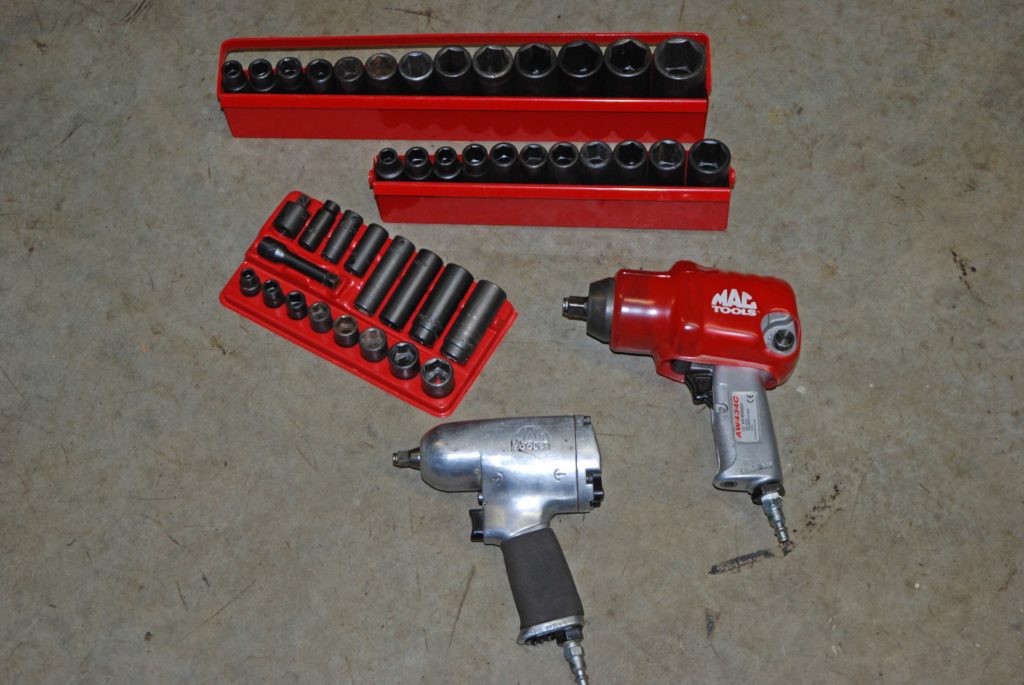
Most common impacts (like the air units shown here or electrics) are available in 3/4-inch drive (not shown), 1/2-inch drive and 3/8-inch drive. 3/4-inch drives aren’t very common in the automotive field. You see more of them in heavy-duty truck and machinery applications. (Image/Wayne Scraba)
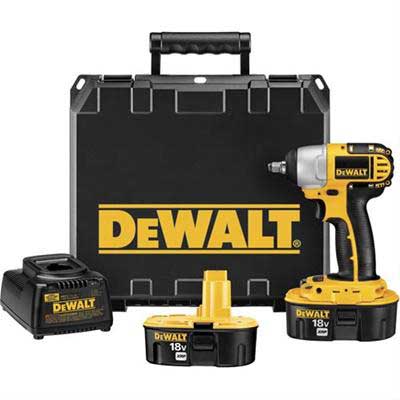
If you’re looking for a smaller, more compact wrench, a good choice is this 3/8-inch drive DeWalt. Powered by an 18-volt NiCad battery, this tool has a torque rating of 125 foot-pounds. The kit includes two batteries along with the charger. (Image/Summit Racing)
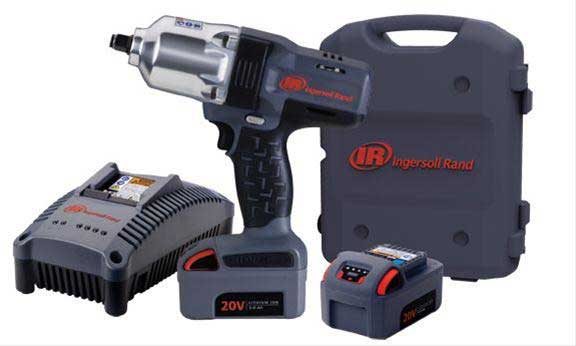
Remember when we stated there was an exception to the big air power torque? This is it: Ingersoll Rand’s 1/2-inch drive W7150K2 packs a whollop. It has a maximum output rating of 780 foot-pounds and it’s powered by a 20-volt Lithium Ion battery. Part of the secret to it’s big power is the rare earth magnet motor. This isn’t an inexpensive impact wrench, but the kit includes two batteries along with a charger.
(Image/Summit Racing)
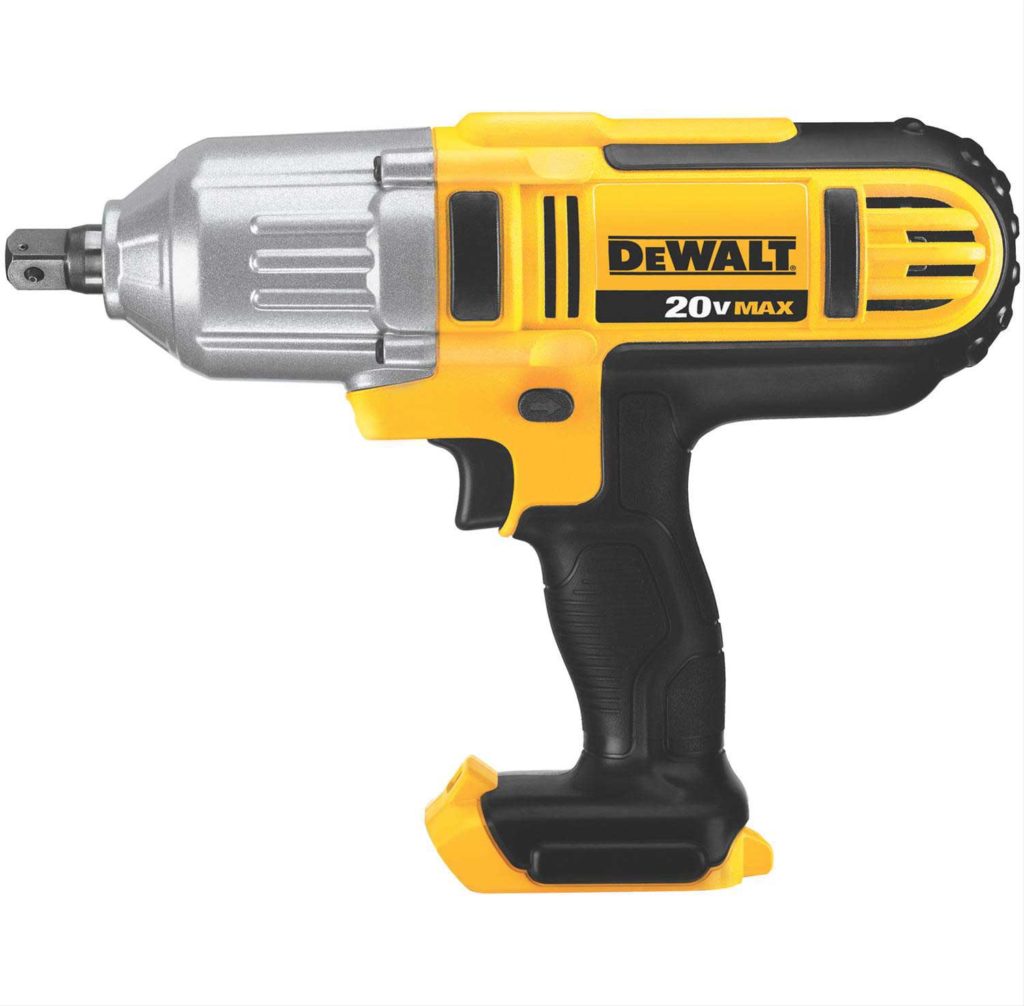
DeWalt’s 20-volt 880 Lithium-Ion cordless impact is a 1/2-inch drive job with a whopping 400 foot-pounds of torque rating. This tool has a variable-speed trigger with an electric brake; an ergonomic handle provides added control and comfort. It even includes an LED light with 20-second delay, providing greater visibility when working in dark areas. See the Summit Racing catalog for more info. (Image/Summit Racing)
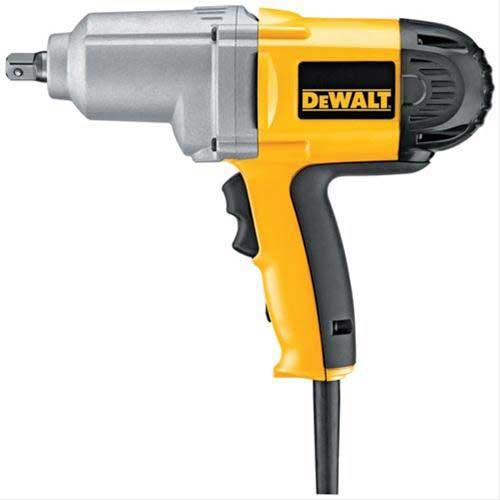
This corded style impact from DeWalt features ball bearing construction for increased durability, a soft grip handle, and a forward/reverse rocker switch for a superior ergonomic design. Typically, these impacts have a 345 foot-pound torque rating. (Image/Summit Racing)
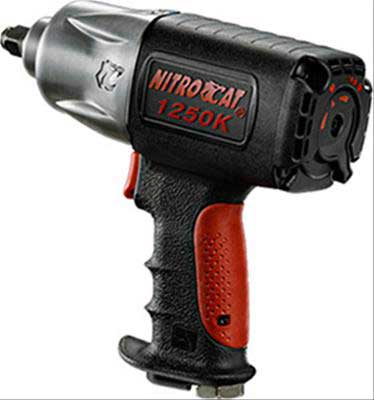
If you really (Really) need brute force, look at this Air Cat Nitro Cat. It delivers an amazing 1,000 blows-per-minute delivering all the speed of a 1/2-inch drive tool with 3/4-inch drive power. They are engineered with the Extreme hard-hitting, twin-clutch mechanism. The housing is aramid-reinforced and it keeps the weight at only 4.7 pounds. By the way, it has a torque rating of (get this) 950 foot-pounds. (Image/Summit Racing)
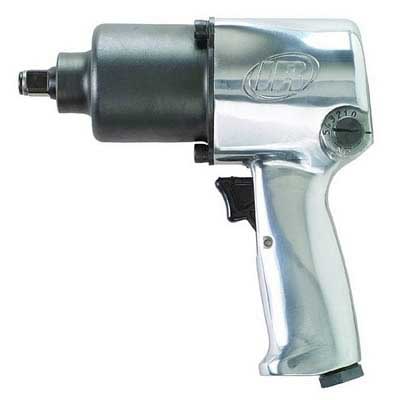
The 231C from Ingersoll-Rand has been around forever (almost three decades) and it will still outperform many newer examples. This 1/2-inch drive pro-grade air impact wrench is built like an anvil. It’s comfortable to use and it’s obviously powerful, 425 foot pounds of torque. (Image/Summit Racing)
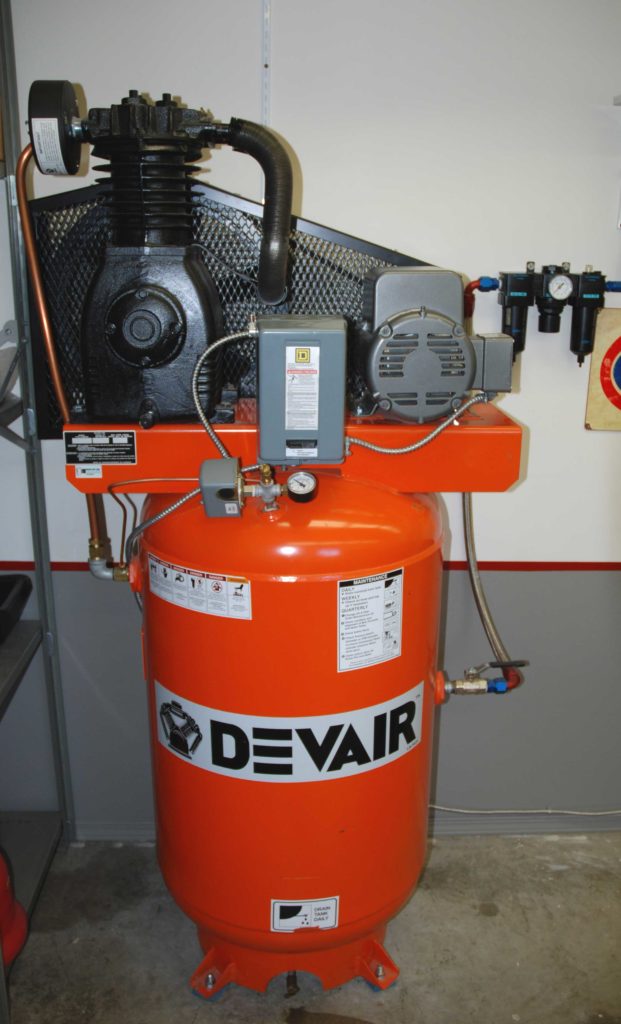
In order to run an air impact easily (at full power), you’ll need a capable compressor. This is a two-stage job that easily drives high power 1/2-inch drive impact wrenches. (Image/Wayne Scraba)
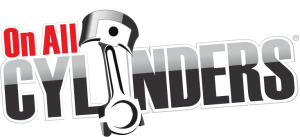
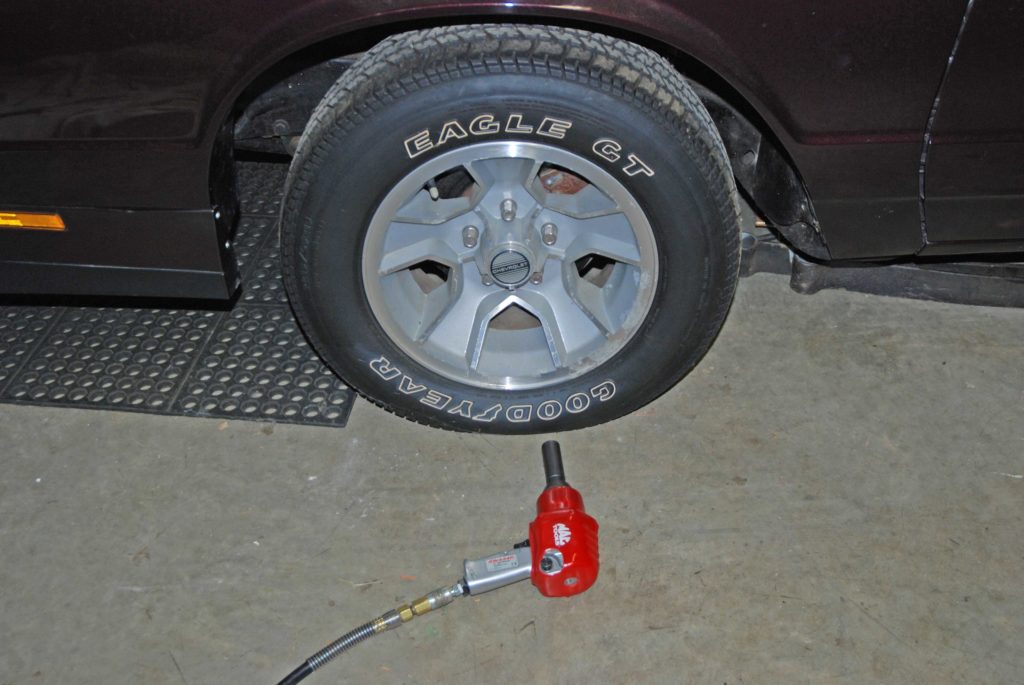
Impact guns definitely has its “pro’s & con’s”,
I’ve used them for years [40+]From 1/4″ to 1″,,,, even “Spline Gun’s”. I’ve owned a lot of different brands(cheap & expensive). My favorite gun is by far the I/R 231C.I always have had best results & longevity. I did buy a impact gun on the
” Road ” one day from Harbor Freight Tools,,1/2″ drive Central Pneumatic “Thunder” Powerful Gun,I was very impressed. But not the same as the I/R 231.
And you guys&gals mounting wheels/tires, etc.,,,STOP GRINDING THE LUG NUTS DOWN! {Tighten them til they smoke,,,,then add a1/4 turn} It’s uncalled for.
And yes,,,I’m “Old School” I prefer Air over Electric/Battery powered anytime!
If no air is available,,,,, that’s why they invented BREAKER BAR’S ! Have Fun.
RAT~A~TAT~TAT~~~LATER~~MOTORHEAD~Ty
Your articles never cease in their ability to inform. Whether to remind me of information that I had forgotten or to enlighten me with New information. Thank you !
The Milwaukee Fuel 1/2-inch Lithium cordless tool is awesome. So is the version sold by Snap-On, although of course it’s very expensive. The Milwaukee is pricey too (about $450 with battery and charger), but well worth it.
I`m an old fart that started wrenchin when replacing plugs and points was mandtory every 6 months or so. The introduction of battery powered impacts did not impress me at first but the stuff Milwaukee makes is unreal. They now have a big boy I`ve heard twist an unreal 1100 ft lbs!! All there stuff is great, and one battery and “one key” (for tracking) is like si-fi stuff to this old fart. I cant wait till they come out with a 18volt jack with built in jack stand.
just bought a milwaukee 12 volt stubby, and love it so far no problems taking wheels off a chevy 1/2 ton
I definitely like the mobility of the electric impact, as a road mechanic it’s a lifesaver. That being said their’s nothing like being able to call in for some air support. I’ve had several air impact wrenches throughout the years, from 3/8″ up to 3/4″. I’d have to say Ingersoll Rand makes the best product. Their line of composite guns is my favorite by far. All the torque you need, without all the weight associated with some older models.
Hey Wayne,
What a fantastic post!!
I have been recommended by my friends to read your articles and the reasons they give is that your articles are out of this world. First of all, the information about the types of batteries amazes me, how simple it is to read and understand into detail. Secondly, the differences in impact wrenches and the jobs to applied to.
Thanks for sharing.
Am off to tweet this.
Great stuff1 Thanks